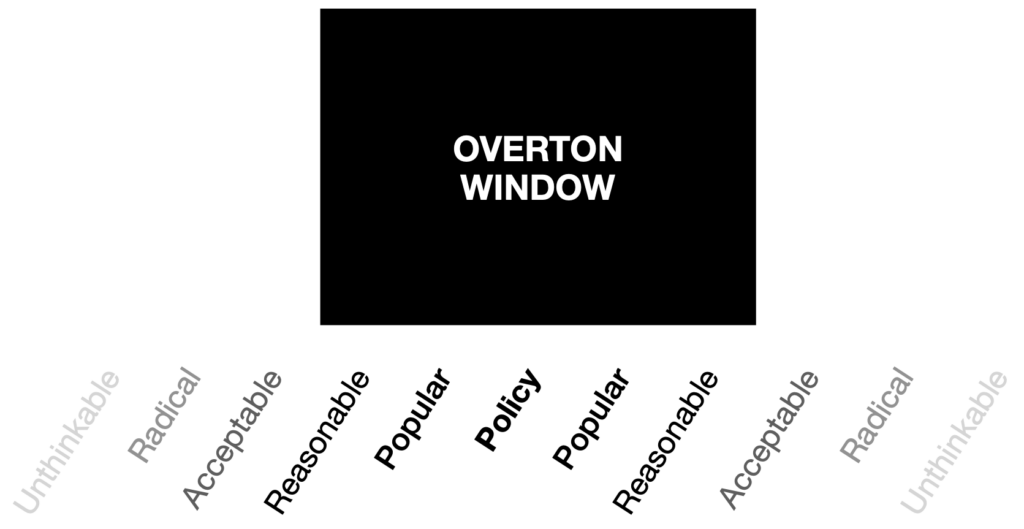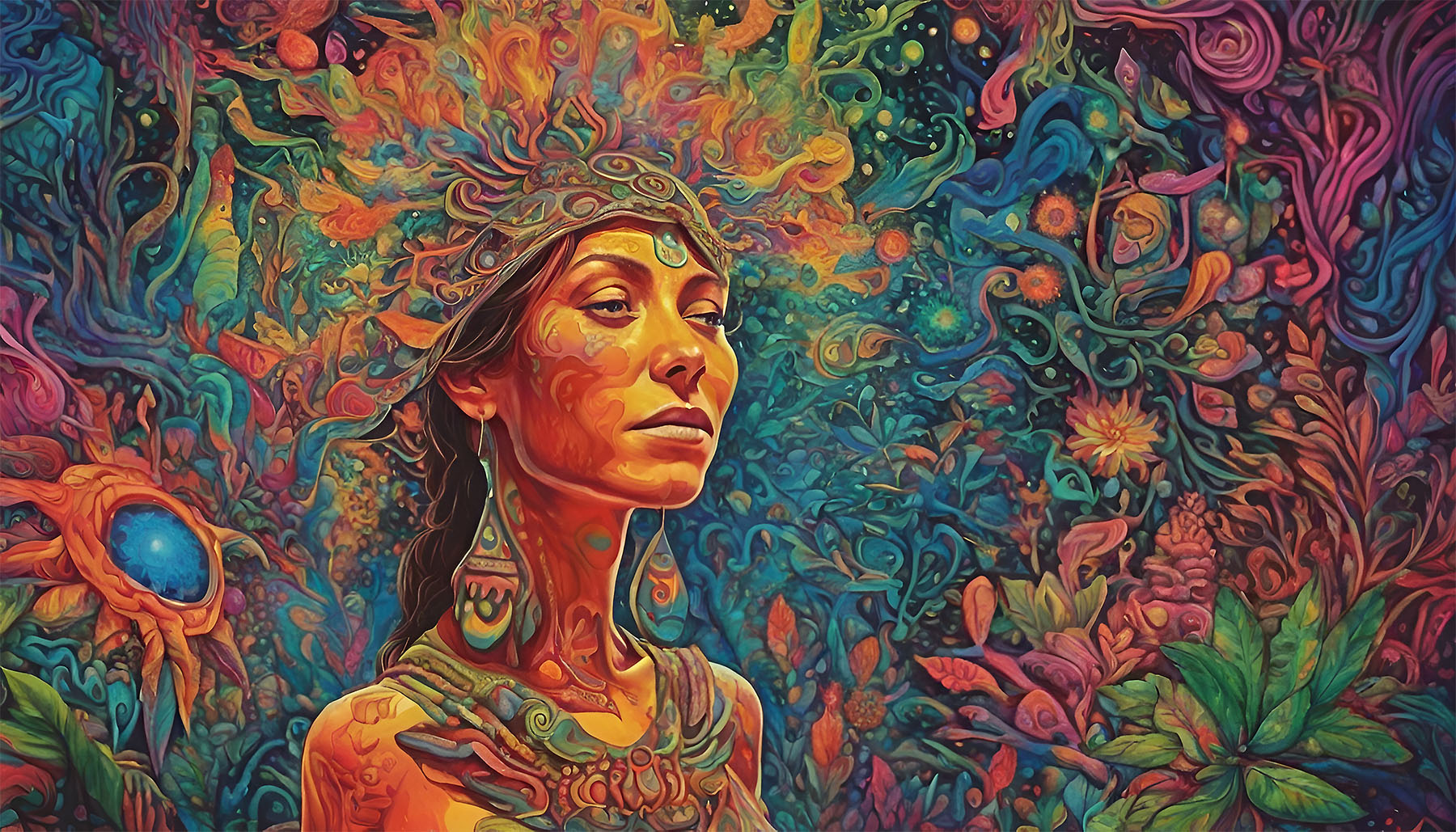When one thinks of the future, indigenous cultures and magical potions don’t necessarily come to mind. Yet, it was these that taught me an important lesson on how we as innovators should think about the future and what mental barriers need to be overcome when solving societal problems.
Six years ago, I embarked on a great adventure: Motivated by a personal crisis, I traveled to Peru for an Ayahuasca retreat. For ten days, I disappeared into the jungle and drank the infamous hallucinogenic brew for five nights, which is considered sacred medicine by many indigenous peoples of the Amazon. After a phase in which startup life had drained all my energy, Ayahuasca seemed the only sensible option to clarify some big inner questions and rejuvenate my exhausted soul. In certain hippie and hipster circles, Ayahuasca was already the hot stuff, so I stumbled upon it. However, the rest of society was still largely unaware of this magical potion at that time.
For thousands of years, traditional shamans have used the psychedelic plant brew to visit the divine “otherworld” to heal the sufferings of their community. Since the 1960s, knowledge of the potent tea made from Chacruna leaves and Ayahuasca vine has also been seeping into industrialized societies. Over the past five decades, more and more anthropologists and adventurers searched for the psychedelic potion – and found out that Ayahuasca has a strong antidepressant effect.
Healing depression with psychedelic jungle plants?
Back in late 2017, this idea was still considered utter nonsense by the medical and scientific community. If serious medical professionals dealt with psychedelic substances, it was at most under the aspect of addiction prevention. Until recently, everyone was warned without any differentiation against all mind-altering substances that Nixon had universally banned in his 1972 declared “War on Drugs.”
Today, in January 2024, things look completely different.
In hundreds of clinics in the USA, ketamine (which also has a strong psychedelic effect) is now used to treat depression and anxiety disorders. Around 1500 clinical studies are currently being conducted or evaluated worldwide, examining the therapeutic use of psilocybin, LSD, MDMA, ibogaine, ketamine, or DMT (the active ingredient in Ayahuasca) for various mental ailments. Parallelly, about 50 clinical pharma trials are underway to develop new psychedelic substances for therapeutic use.
The first Phase 3 study for the use of MDMA in post-traumatic stress disorder was completed with great success in mid-2023. Approval of the substance by the U.S. Food and Drug Administration (FDA) could occur this year. Another Phase 3 study is currently underway for the use of psilocybin in treatment-resistant depression. If this also meets expectations, magic mushrooms could receive approval next year.
No topic in the field of psychotherapy and psychopharmacology has experienced as much hype in recent years as the potential of psychedelics. After research in this area had come to a complete halt for more than 40 years, psychedelics suddenly are seen as the greatest hope in treating mental illnesses. The reason for that change of mind can be summed up in one word: Desperation.
Despite the greatest efforts, neither psychopharmacology nor psychotherapy has managed to halt the global crisis of mental health on other paths. Doctors and therapists are still quite helpless when facing a veteran with PTSD or a person with treatment-resistant depression. Not to mention the human suffering, the community also suffers as health care costs in all Western countries rise and the economic costs caused by mental illnesses, such as absenteeism or early retirement, only know one trend: upward. Apparently, the ends eventually justify the means.
Australia is the first country that approved the use of psilocybin (magic mushrooms) for therapeutic purposes in 2023. In the U.S. state of Oregon, magic mushrooms are legalized for supervised therapeutic use and decriminalized for personal use. In a way, the decriminalization of drugs in Portugal and Spain can also be seen as a signal for a societal shift towards a progressive drug culture. In the foreseeable future, more countries will follow suit and find their own way to update their outdated drug policies.
How Paradigms Change
The development shows how quickly and radically societal paradigms can change when the pressure on the system becomes large enough. A model that illustrates this process is the Overton Window. It describes the steps an idea must take to move from the taboo zone to the mainstream of a society, until it finally becomes established law.

The example of psychedelics shows that the process from taboo to law can be quite short if the pressure is high enough and an idea gains momentum. It also makes clear that we – especially as innovators – must always reckon with the unthinkable. What seems unthinkable today could change the world tomorrow.
The ability to develop the necessary imagination and to break through the boundaries of the conceivable distinguishes visionaries from the ordinary people among us. But breaking through the boundaries of the conceivable is easier said than done. It is conventions that stand in the way. The pressure to conform, constraints within established systems, the fear of exclusion and loss of reputation within one’s own community. But above all, it is our faulty mind that we need to outsmart.
Visionaries possess the ability to overcome the normality bias – the default mode of our mind that makes us believe everything will always remain as it is, for better or worse. It is ingrained in all of us and often obstructs our view of the potential we could unleash if we only dared to consider the unthinkable, radical, crazy as possible. Unfortunately, this also applies in the opposite sense: We also like to close our eyes to the dark tendencies in our society because the normality bias makes it almost impossible for us to imagine a different status quo.
Cognitive Biases as a Mental Operating System
As much as we consider ourselves rational beings and pride ourselves on making evidence-based decisions as a society, we cannot close our eyes to one fact: Cognitive biases are still the strongest drivers of our mental operating system.
Already in 2010, British psychopharmacologist David Nutt showed in a widely acclaimed study comparing the risk potential of common drugs, that psychedelic substances pose the least health risk. Alcohol was also considered. Now guess what the most dangerous drug was according to Nutt…

Indeed, it was alcohol. Precisely the most harmful of all psychoactive substances has been chosen by our society as the legal option for altering consciousness. The difference between alcohol (highest risk) and psilocybin (lowest risk) is not just a small one. According to Nutt, the health risk of alcohol is eleven times greater than that of magic mushrooms.
Although Nutt’s data have been circulating for more than ten years, only Australia, Oregon, Portugal, and Spain have changed their legislation – and only in favor of illegal drugs. If we were rational beings and made rational laws, alcohol would be banned, and magic mushrooms would sprout in every front yard. Instead, we decided to criminalise nature, though in a very selevtive way. While I can legally buy and consume highly dangerous neurotoxins in bottles on every street corner in Berlin, while I’m allowed to cultivate fly agarics in unlimited quantities, it would be a violation of the law if healing, harmless magic mushrooms spread in a shady corner of my garden.
This paradox shows how strong the forces of inertia are, the deep beliefs of our society, which help maintain the status quo. But we can rely on the Overton Window: A new idea that has found its way into a society will sooner or later prevail and turn what we consider normal on its head. As innovators, it is in our hands to sow these ideas. The only thing we have to do is that one thing: break through the barriers of our imagination and consider the impossible as possible.
